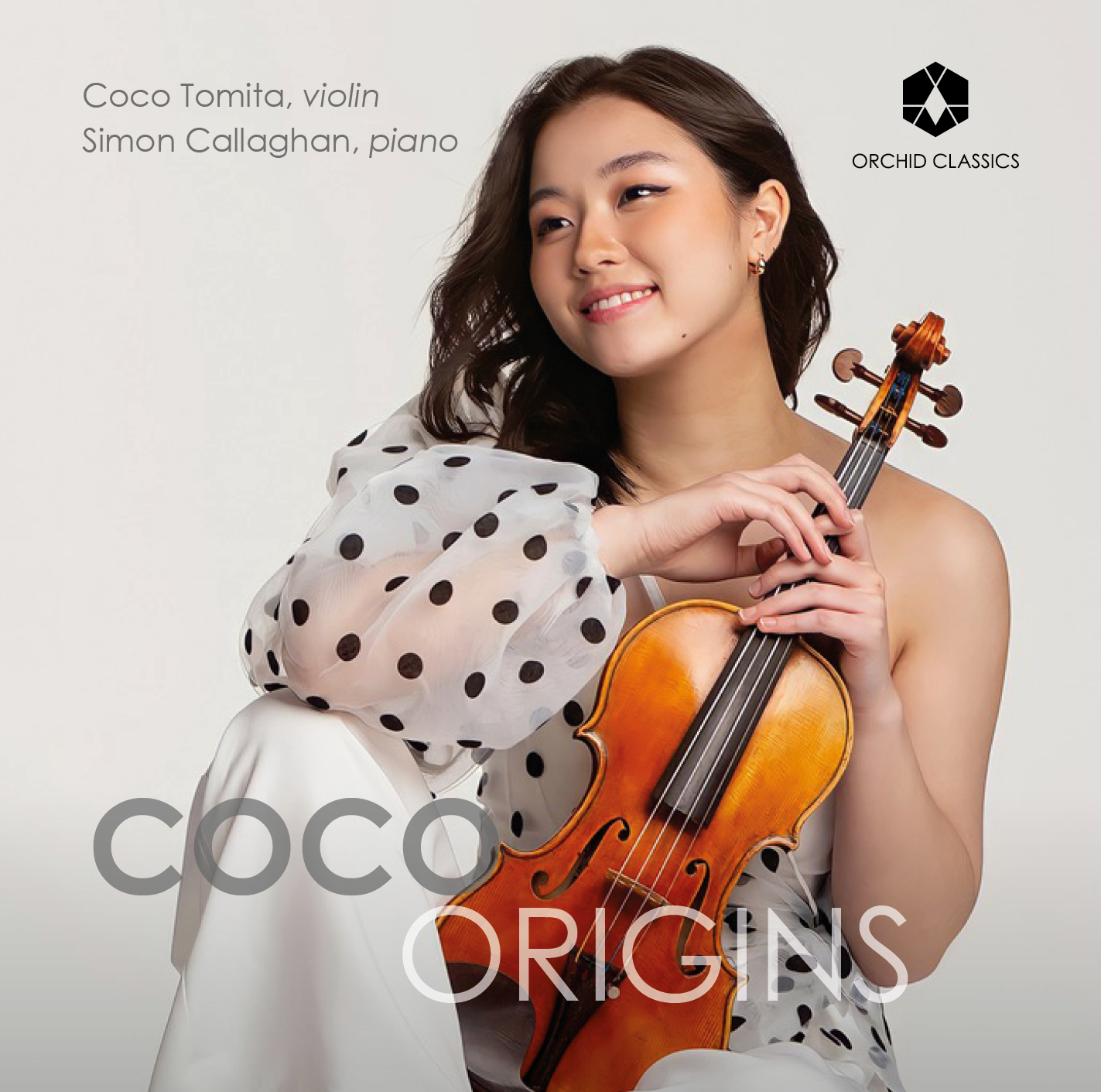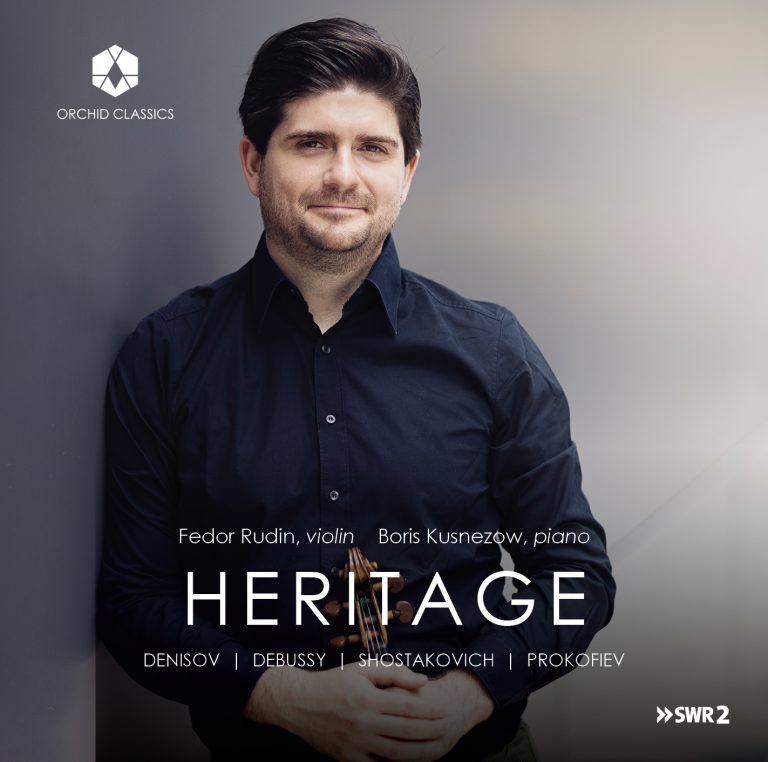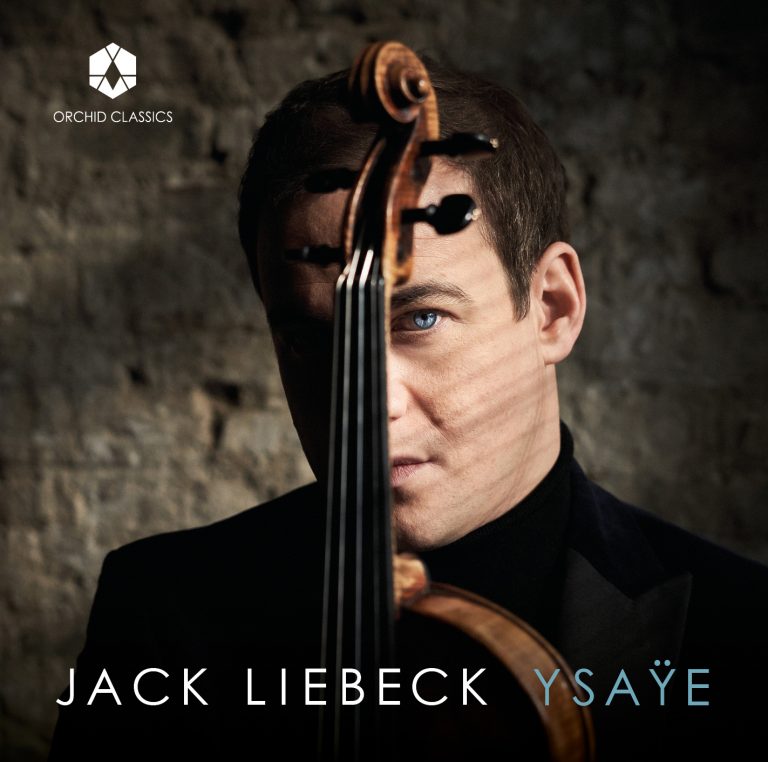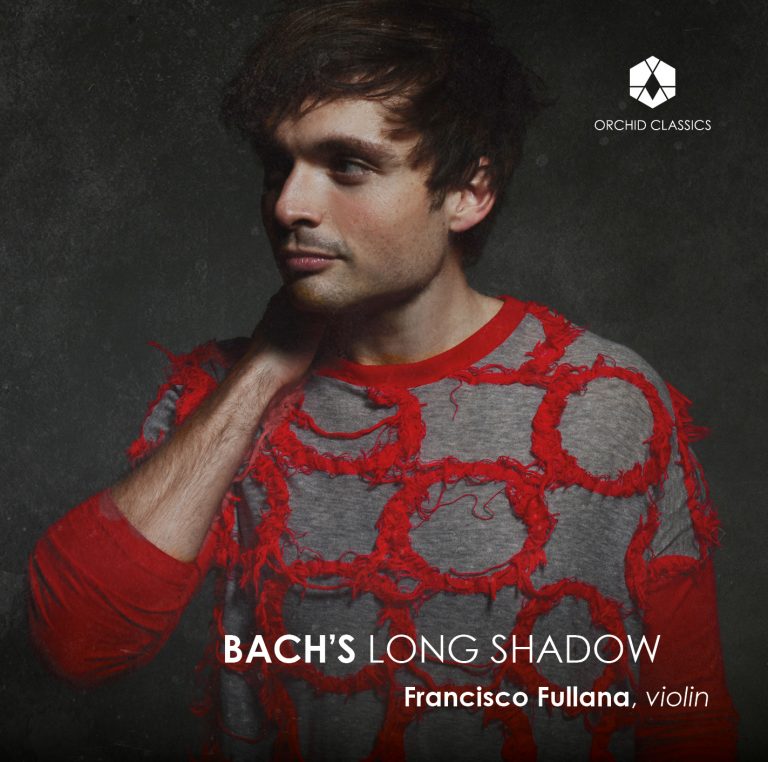Artist Led, Creatively Driven

Origins
Coco Tomita, violin
Simon Callaghan, piano
Release Date: March 4th
ORC100194
ORIGINS
George Enescu (1881-1955)
1. Ménétrier (Impressions d’enfance) for solo violin, Op.28
Francis Poulenc (1899-1963)
Sonata for violin and piano (FP 119)
2. Allegro con fuoco
3. Très lent et calme
4. Presto tragico
Lili Boulanger (1893-1918)
Two Pieces for violin and piano
5. I Nocturne
Jenö Hubay (1858-1937)
6. Carmen – Fantaisie brillante
Maurice Ravel (1875-1937)
Sonata No.2 in G major for violin and piano
7. Allegretto
8. Blues. Moderato
9. Perpetuum mobile. Allegro
Claude Debussy (1862-1918)
Arranged by Jascha Heifetz
10. Beau soir
Coco Tomita, violin
Simon Callaghan, piano
Romanian composer and violinist George Enescu was hugely influential among the next generation of violinists – rather against his will, as he never sought the role of ‘pedagogue’, but had a magnetic personality and extraordinary musicality that earned him widespread admiration. His memory was exceptional: he knew the entirety of Wagner’s Ring by heart, and when Maurice Ravel approached Enescu to run through his Violin Sonata before giving its premiere in 1927, the young Yehudi Menuhin, who was studying with Enescu at the time, observed: “With Ravel at the piano, he played the sonata through at sight, carefully and almost flawlessly… When they were done, Ravel pronounced himself delighted and prepared to go. Enescu stopped him, saying ‘No, let’s try it once more, just to be sure.’ This time Enescu put his part aside and played the whole work from memory. My father and I were dumbfounded, as was Ravel.”
As a composer, Enescu’s output combines elements of Romanticism and Classical structures with motivic development and cyclical form, often incorporating elements of folk music, especially that of Romania. He remarked in 1924 that the composer’s only method of using folk music is “to rhapsodise it, with repetitions and juxtapositions”. Enescu also emphasised melody above all: “I’m not a person for pretty successions of chords … a piece deserves to be called a musical composition only if it has a line, a melody, or, even better, melodies superimposed on one another”. In some of his music the use of folk elements lends itself to a childlike innocence, as is the case with his Impressions d’enfance for violin and piano, Op.28 of 1940: a suite of ten pieces, of which the first is Ménétrier (‘The Country Fiddler’). Most of the pieces are to be played seamlessly, but there are gaps between the first and second, and third and fourth pieces, allowing the first and third to be played independently. Ménétrier, for violin alone, encapsulates Enescu’s improvisatory, folk-like violin style, as Menuhin described: “However disciplined his knowledge of composition, it never lost that magic element of improvisation. He was bent on communicating the sacred fire… every note, shade, colour and accent is written out, so that any idiot-trained violinist can end up sounding like a true gypsy.”
Francis Poulenc was not a fan of the sound of the solo violin, and his first attempt at writing a violin sonata, in 1918, failed to gain traction. The formidable young violinist Ginette Neveu succeeded in persuading Poulenc to try again much later, during the Second World War, when he wrote both his two string sonatas (the other being for cello and piano). In the years approaching the War, Poulenc wrote, “I don’t like this epoch, where one feels so rarely free”. He was able, to some extent, to escape into composition in the years that followed, starting work on the Sonata for violin and piano in 1942 and finishing it in 1943; the work was published in 1944. The first performance took place on 21 June 1943 in Paris, performed by Neveu with the composer at the piano. Poulenc was unconvinced by the result, arguing that the only really idiomatic sections had been conceived by Neveu herself.
The angular nature of the opening Allegro could indeed signify a composer wrangling with the violin’s unique qualities, but the results are original and refreshing. The subtly beautiful Intermezzo, described by Poulenc as “vaguely Spanish”, evokes guitar music with its strumming textures and ends with a witty throwaway gesture. The reference to Spanish music was a nod to the work’s dedicatee, the Spanish poet and playwright, Federico García Lorca, who had been killed by fascists in the Spanish Civil War. Dedicating this work to Lorca’s memory was a bold statement to make in wartime Paris. Poulenc felt a special affinity with the writer and would go on to compose his Trois chansons de F. García Lorca in 1947. The sonata’s energetic, demanding finale reveals the influence of Stravinsky, whom Poulenc had idolised since his youth.
Lili Boulanger’s music was also bound up with wartime experiences. During the First World War she “devoted herself to caring for wounded soldiers”, according to her sister, the great music teacher Nadia Boulanger. Lili Boulanger also founded the Comité Franco-Américain du Conservatoire National to provide support for musicians fighting in the conflict. The Nocturne for violin and piano dates from just before this period: 1911. It is the first of Boulanger’s Two Pieces for violin and piano, and was dedicated “à ma chère Marie-Danielle Parenteau”. The writing is an intoxicating mixture of ardent, virtuosic violin lines punctuated by folk-like inflections and supported by richly Romantic piano harmonies. Lili Boulanger’s understanding of these instruments was developed at an early age, as Nadia explained: “From the age of 6 to 16, she studied harmony, played a little piano, violin, cello and even the harp, while discovering new scores, such as Debussy’s Pelléas.”
In common with Coco Tomita, Jenö Hubay grew up as part of a musical family and made his debut at a young age. Hubay was taught by his father, Károly Huber, who was violin professor at the Budapest Conservatory, after which he studied with the great violinist Joseph Joachim and gave recitals with Liszt. On Liszt’s advice, Hubay travelled to Paris, where he befriended the great Belgian violinist Henri Vieuxtemps. He became a highly influential teacher, guiding violin greats such as Jelly d’Aranyi (who inspired Ravel’s Tzigane among many other works), Joseph Szigeti, Zoltán Székely, Stefi Geyer and Ilona Fehér. Hubay’s compositional output includes original works and sparkling arrangements. The Carmen-fantázia or Carmen – Fantaisie brillante (1876) for violin and piano or orchestra is an arrangement of music from Bizet’s opera Carmen – the first of its kind, as Hubay was quick to recognise the brilliance of Bizet’s music and his piece was composed in the year following the opera’s premiere in 1875. The fantasy is dedicated to Vieuxtemps and includes nods to that composer as well as being the only major violin arrangement to include Bizet’s ‘Toreador Song’.
Ravel, like Poulenc, made a stuttering start when it came to writing a violin sonata. His first attempt, which extended no further than a single movement, dates from 1897 and was published posthumously. Nearly three decades later, Ravel wrote his Violin Sonata No.2 in G major for perhaps his closest female friend, violinist Hélène Jourdan-Morhange, for whom he had already considered writing a concerto. Sadly, Jourdan-Morhange would never perform Ravel’s sonata as it was at around this time that her career was curtailed by rheumatism. This tragedy is likely to have contributed to the length of time taken by Ravel to complete the piece: he started work in 1923 but in January 1924 wrote to Manuel de Falla: “I thought I would finish my Violin Sonata towards the beginning of February. I have just abandoned it… my depression is worse than ever.”
When Ravel did at last complete the sonata in 1927, he dedicated it to Jourdan-Morhange. Rather than trying to unify the timbres of violin and piano in this work, he sought to accentuate their differences, even their incompatibilities. The first movement juxtaposes the piano’s brittle timbres with the violin’s inherent lyricism, its wistful lines thrown into relief by the piano’s haunting parallel chords, pithy interjections and almost Bach-like figurations. Both Ravel and Jourdan-Morhange loved jazz, and the second movement is a ‘blues’ in which Ravel uses violin pizzicato to create a jangling sonority – reminiscent of a mandolin or ukulele – as well as improvisatory, jazzy violin lines that would sound as much at home in the world of Stéphane Grappelli as in the concert hall. The finale is a perpetuum mobile that plays with motifs heard in the earlier movements. The violin part is propelled onwards as though compelled by some nervous energy, building towards the vigorous final bars.
Beau soir is a song composed by Claude Debussy when he was still a teenager, probably aged about 15 or 16, in 1877 or 1878. It was originally to a poem by Paul Bourget, one of the composer’s favourite writers, as his fellow composition students at the Paris Conservatoire noted. Paul Vidal recalled that Debussy was “very fond of the poetry of Paul Bourget” while Raymond Bonheur described Debussy arriving for classes “at the last minute, coming across the courtyard of the old Conservatoire with the short, hurried steps that always characterised him… Most of his settings of Bourget date from those long distant days…” The song was published in 1891 and features Debussy’s already characteristically hazy piano harmonies supporting a creamy melody, heard here in an arrangement for violin and piano by the celebrated violinist Jascha Heifetz.
© Joanna Wyld, 2021
Coco Tomita
Violin
Hailed by critics and audiences alike, the UK/Germany based Japanese violinist Coco Tomita gained public recognition after winning the BBC Young Musician 2020 Strings Category. Her success led to an invitation to record this disc with Orchid Classics, numerous approaches by music festivals across the UK, and an extensive concert tour of Japan, her home country, highlights of which are her concerto debuts with the Nagoya Philharmonic Orchestra and Tokyo Metropolitan Symphony Orchestra. Previously, she has won numerous prizes at international competitions and festivals, including Golden Medals at the Vienna International Music Competition and Berliner International Music Competition, and the Carl Flesch Prize at the Carl Flesch Academy.
Coco was born into a musical family and began to play the violin when she was four years old. At the age of ten she made her debut at the Cadogan Hall, London, with the Southbank Sinfonia and has since performed in Austria, Belgium, Canada, Germany, Italy, Japan, Netherlands, Spain, Switzerland and the UK. She has also appeared as a soloist with orchestras such as the Bath Philharmonia and Philharmonie Baden-Baden.
Coco began her early training at the Yehudi Menuhin School with renowned pedagogues Natasha Boyarsky and Lutsia Ibragimova. Since 2021, she has been studying under the guidance of Professor Kolja Blacher at the Hochschule für Musik Hanns Eisler, Berlin.
On this disc, Coco plays on a violin by Antonio Stradivari kindly loaned to her by a generous sponsor through the Beare’s International Violin Society.
© Coco Tomita, 2021
Simon Callaghan
Piano
Steinway Artist Simon Callaghan performs internationally as a soloist and chamber musician, in parallel with his highly successful career as a recording artist. In response to his regular performances in the UK’s major concert halls, his international tours to Asia, North America and Europe, and his extensive, acclaimed discography, Callaghan has developed a wide following. A favourite artist at the internationally-renowned Husum Festival of Piano Rarities in Germany, Callaghan’s recent sell-out recital drew praise from audience and critics, with the Frankfurter Allgemeine Zeitung describing his “cleverly curated recital full of discoveries” (VAN Magazine) as “technically brilliant”.
Callaghan’s repertoire includes over fifty concertos, highlights of the standard solo and chamber works of the 19th and 20th centuries, and much that is rare and unexplored. He has recently begun a projected series with Lyrita, presenting world premiere recordings of British concertos with Martyn Brabbins and the BBC National Orchestra of Wales. By the end of 2022 he will have recorded four albums for Hyperion’s celebrated The Romantic Piano Concerto series. Callaghan’s first disc for Hyperion, with the BBC Scottish Symphony Orchestra, formed part of his successful PhD project at the Royal Northern College of Music. His three-year Poulenc project for Nimbus Records launched in 2019, recording L’histoire du Babar with Harry Potter actor Miriam Margolyes (The Independent, Five Stars).
Callaghan has expanded his role to encompass performing and producing in an exciting association with Nimbus Records and The Lyrita Recorded Edition Trust. His reputation and experience in chamber music led to him accepting the role of Director of Music at London’s celebrated Conway Hall, curating the longest-running series of its kind in Europe.
www.simoncallaghan.com










